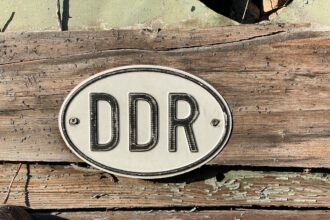Depersonalization and derealization are psychological phenomena that can leave you feeling detached from yourself or your surroundings. When you experience depersonalization, you may feel as though you are an observer of your own life, as if you are watching yourself from a distance. This can create a sense of unreality, making it difficult to connect with your emotions or even recognize your own body.
On the other hand, derealization involves a sense of disconnection from the world around you. You might perceive your environment as strange or dreamlike, leading to feelings of confusion and anxiety. These experiences can be unsettling and disorienting, often occurring in response to stress, trauma, or anxiety.
While they are not classified as mental disorders on their own, they can be symptoms of underlying conditions such as anxiety disorders, depression, or post-traumatic stress disorder (PTSD). Understanding these phenomena is crucial for anyone who experiences them, especially when it comes to activities that require focus and attention, such as driving.
Key Takeaways
- Depersonalization and derealization are dissociative disorders that can cause individuals to feel disconnected from themselves and their surroundings.
- Driving with depersonalization and derealization can lead to increased anxiety, difficulty focusing, and impaired judgment, posing a risk to the individual and others on the road.
- Coping strategies for driving with depersonalization and derealization include deep breathing exercises, mindfulness techniques, and creating a calming driving environment.
- Seeking professional help, such as therapy or medication, can be beneficial for managing driving anxiety related to depersonalization and derealization.
- Creating a safe driving environment for individuals with depersonalization and derealization involves minimizing distractions, practicing relaxation techniques, and avoiding triggering situations while driving.
The Impact of Depersonalization and Derealization on Driving
Driving while experiencing depersonalization or derealization can be particularly challenging. The sensations of detachment can impair your ability to concentrate on the road, making it difficult to respond to changing traffic conditions or navigate complex intersections. You may find yourself feeling disconnected from the act of driving itself, which can lead to increased anxiety and fear about your ability to control the vehicle.
This heightened state of anxiety can create a vicious cycle, where the fear of losing control exacerbates the feelings of depersonalization and derealization. Moreover, the impact of these experiences on your perception can lead to misjudgments while driving. You might struggle to gauge distances accurately or misinterpret the speed of oncoming vehicles.
This can result in hesitation or overcorrection, both of which can be dangerous on the road. Understanding how depersonalization and derealization affect your driving is essential for developing strategies to cope with these challenges effectively.
Coping Strategies for Driving with Depersonalization and Derealization

When faced with the challenges of driving while experiencing depersonalization and derealization, it’s important to have coping strategies in place. One effective approach is to practice mindfulness techniques before and during your drive. Focusing on your breath and grounding yourself in the present moment can help anchor you when feelings of detachment arise.
You might find it helpful to engage your senses by noticing the colors around you, feeling the steering wheel in your hands, or listening to music that brings you joy. These techniques can help bridge the gap between your internal experience and the external world. Another strategy is to gradually expose yourself to driving situations that may trigger your symptoms.
Start with short trips in familiar areas where you feel comfortable. As you gain confidence, you can gradually increase the complexity of your drives. This gradual exposure can help desensitize you to the feelings of depersonalization and derealization, allowing you to build resilience over time.
Additionally, consider driving with a trusted friend or family member who can provide support and reassurance during your journey.
Seeking Professional Help for Driving Anxiety
| Metrics | Statistics |
|---|---|
| Percentage of people seeking professional help for driving anxiety | 25% |
| Common age group seeking help | 25-40 years old |
| Types of professionals sought | Therapists, psychologists, and driving instructors |
| Success rate of professional help | 70% |
If you find that depersonalization and derealization significantly impact your ability to drive safely, seeking professional help may be a beneficial step. A mental health professional can work with you to explore the underlying causes of your symptoms and develop tailored coping strategies. Cognitive-behavioral therapy (CBT) is one effective approach that can help you reframe negative thought patterns associated with driving anxiety.
Through therapy, you can learn techniques to manage your symptoms more effectively and regain confidence behind the wheel. In addition to therapy, medication may also be an option worth discussing with a healthcare provider. Certain medications can help alleviate anxiety symptoms that contribute to feelings of depersonalization and derealization.
A comprehensive treatment plan that includes both therapy and medication may provide you with the tools needed to navigate driving challenges more effectively.
Creating a Safe Driving Environment for Individuals with Depersonalization and Derealization
Creating a safe driving environment is essential for anyone experiencing depersonalization and derealization. Start by ensuring that your vehicle is comfortable and well-maintained. Adjust your seat and mirrors so that you have a clear view of the road, and eliminate any distractions within the car, such as loud music or clutter.
A calm environment can help reduce anxiety levels and make it easier for you to focus on driving. Additionally, consider choosing times for driving when traffic is lighter and conditions are more favorable. Early mornings or late evenings may provide a quieter atmosphere that allows you to concentrate better.
If possible, plan routes that are familiar to you, as this can reduce feelings of uncertainty and enhance your sense of control while driving.
Tips for Managing Depersonalization and Derealization Symptoms while Driving

Managing symptoms of depersonalization and derealization while driving requires a proactive approach. One effective tip is to establish a pre-driving routine that helps ground you before getting behind the wheel. This could include taking a few moments to breathe deeply, stretching your body, or engaging in positive self-talk.
Reminding yourself that you are capable and safe can help alleviate some of the anxiety associated with driving. During your drive, if you begin to feel detached or disoriented, try using grounding techniques such as focusing on specific objects outside the car or repeating affirmations in your mind. For instance, telling yourself “I am in control” or “I am safe” can help reinforce a sense of stability.
If necessary, don’t hesitate to pull over in a safe location until you feel more centered before continuing your journey.
Understanding Triggers and Avoiding Them while Driving
Understanding your triggers is crucial for managing depersonalization and derealization while driving.
For example, heavy traffic, unfamiliar routes, or stressful situations may heighten feelings of detachment.
By identifying these triggers, you can take proactive steps to avoid them when possible. If certain routes consistently lead to increased anxiety, consider alternative paths that may be less stressful for you. Additionally, if driving during peak hours tends to trigger symptoms, try adjusting your schedule to drive during quieter times.
Being aware of your triggers empowers you to make informed decisions about when and where to drive.
The Importance of Self-Care and Self-Compassion for Individuals with Depersonalization and Derealization
Self-care plays a vital role in managing depersonalization and derealization symptoms effectively. Prioritizing activities that promote relaxation and well-being can help reduce overall anxiety levels. Engaging in regular exercise, practicing mindfulness meditation, or spending time in nature are all excellent ways to nurture your mental health.
By taking care of yourself holistically, you create a foundation that supports resilience against symptoms when they arise. Equally important is practicing self-compassion during challenging moments. It’s easy to become frustrated or critical of yourself when experiencing depersonalization or derealization while driving.
However, reminding yourself that these experiences are not a reflection of your worth or abilities can foster a kinder internal dialogue. Embracing self-compassion allows you to navigate difficulties with greater ease and understanding, ultimately empowering you on your journey toward healing and confidence behind the wheel. In conclusion, navigating the complexities of depersonalization and derealization while driving requires awareness, coping strategies, and support.
By understanding these phenomena and their impact on driving, you can take proactive steps toward creating a safer driving experience for yourself. Remember that seeking professional help is always an option if needed, and prioritizing self-care will contribute significantly to managing symptoms effectively. With patience and practice, you can regain confidence in your ability to drive safely despite these challenges.
Driving can be a routine activity for many, but for those experiencing depersonalization-derealization, it can become a disorienting and unsettling experience. This condition can make individuals feel detached from their surroundings or themselves, which can be particularly challenging when operating a vehicle. For more insights into how depersonalization-derealization affects daily activities like driving, you can explore a related article on the topic by visiting Unplugged Psych. This resource provides valuable information on understanding and managing the symptoms associated with this condition, offering support to those who may find driving a daunting task due to their experiences of depersonalization-derealization.
LEARN MORE About Depersonalization & Derealization
FAQs
What is depersonalization-derealization when driving?
Depersonalization-derealization is a mental health condition characterized by feeling detached from oneself (depersonalization) and feeling disconnected from the surrounding environment (derealization). When driving, individuals with this condition may experience a sense of unreality or detachment from their own actions and the world around them.
What are the symptoms of depersonalization-derealization when driving?
Symptoms of depersonalization-derealization when driving may include feeling like you are watching yourself from outside your body, feeling like the world around you is unreal or distorted, experiencing a sense of detachment from your own thoughts and emotions, and feeling like you are on autopilot while driving.
What causes depersonalization-derealization when driving?
Depersonalization-derealization can be triggered by various factors, including stress, trauma, anxiety, depression, substance abuse, and certain psychiatric disorders. When driving, factors such as traffic, road conditions, and the act of driving itself can exacerbate symptoms of depersonalization-derealization.
How is depersonalization-derealization when driving treated?
Treatment for depersonalization-derealization when driving may include therapy, medication, stress management techniques, and lifestyle changes. Cognitive-behavioral therapy (CBT) and mindfulness-based approaches have been found to be effective in managing symptoms. It is important to consult a mental health professional for an accurate diagnosis and personalized treatment plan.
Can depersonalization-derealization when driving be dangerous?
Depersonalization-derealization when driving can potentially be dangerous, as it may lead to impaired perception, attention, and decision-making while operating a vehicle. It is important for individuals experiencing these symptoms to seek help and, if necessary, refrain from driving until their symptoms are under control.




